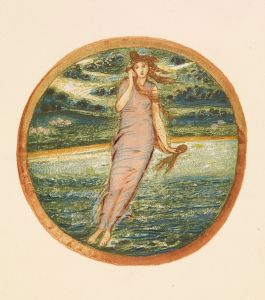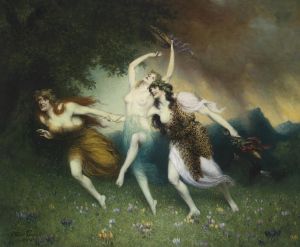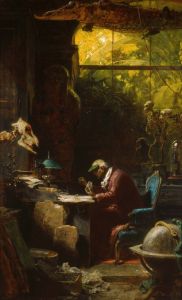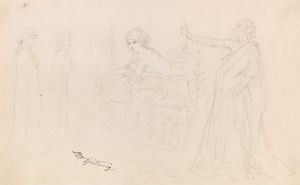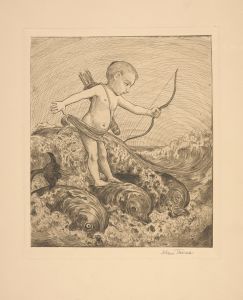
Nixenfang
A hand-painted replica of Carl Spitzweg’s masterpiece Nixenfang, meticulously crafted by professional artists to capture the true essence of the original. Each piece is created with museum-quality canvas and rare mineral pigments, carefully painted by experienced artists with delicate brushstrokes and rich, layered colors to perfectly recreate the texture of the original artwork. Unlike machine-printed reproductions, this hand-painted version brings the painting to life, infused with the artist’s emotions and skill in every stroke. Whether for personal collection or home decoration, it instantly elevates the artistic atmosphere of any space.
Carl Spitzweg was a 19th-century German romanticist painter known for his detailed and often humorous depictions of everyday life. One of his works, "Nixenfang," which translates to "Catching Mermaids," exemplifies his unique style and thematic interests. Spitzweg's paintings often reflect a blend of romanticism and Biedermeier sensibilities, focusing on the quaint and whimsical aspects of bourgeois life.
"Nixenfang" captures a scene that is both imaginative and reflective of Spitzweg's fascination with folklore and fantasy. The painting depicts a serene and somewhat mystical setting, where a fisherman is engaged in the act of catching mermaids. This subject matter aligns with the romantic era's interest in mythological and fantastical themes, as well as the exploration of the natural world and its mysteries.
Spitzweg's technique in "Nixenfang" is characterized by his meticulous attention to detail and his ability to convey texture and light. His use of color is subtle yet effective, creating a harmonious balance that enhances the dreamlike quality of the scene. The composition is carefully arranged to draw the viewer's eye to the central action while also allowing the surrounding environment to play a significant role in the overall narrative.
The painting reflects Spitzweg's skill in combining elements of humor and fantasy with a keen observation of human nature. The fisherman, depicted with a sense of curiosity and wonder, embodies the romantic ideal of the individual in pursuit of the unknown. This theme is common in Spitzweg's work, where ordinary characters are often placed in extraordinary situations, inviting viewers to explore the boundaries between reality and imagination.
Spitzweg's background as a pharmacist before he became a full-time artist may have influenced his detailed and methodical approach to painting. His scientific training likely contributed to his precise rendering of natural elements, which is evident in the lush landscapes and carefully depicted figures in "Nixenfang."
While "Nixenfang" is not as widely known as some of Spitzweg's other works, such as "The Poor Poet" or "The Bookworm," it remains an important part of his oeuvre, showcasing his ability to blend narrative, humor, and technical skill. The painting is a testament to Spitzweg's unique perspective on the world, where the mundane and the magical coexist in harmony.
Spitzweg's work, including "Nixenfang," continues to be celebrated for its charm and insight into 19th-century life. His paintings offer a window into a world where the ordinary is infused with a sense of wonder and possibility, reflecting the broader cultural and artistic movements of his time. Through his art, Spitzweg invites viewers to engage with the world around them in a more imaginative and thoughtful way, a legacy that endures in the appreciation of his work today.





